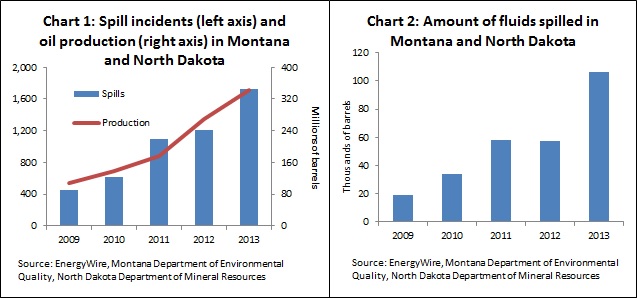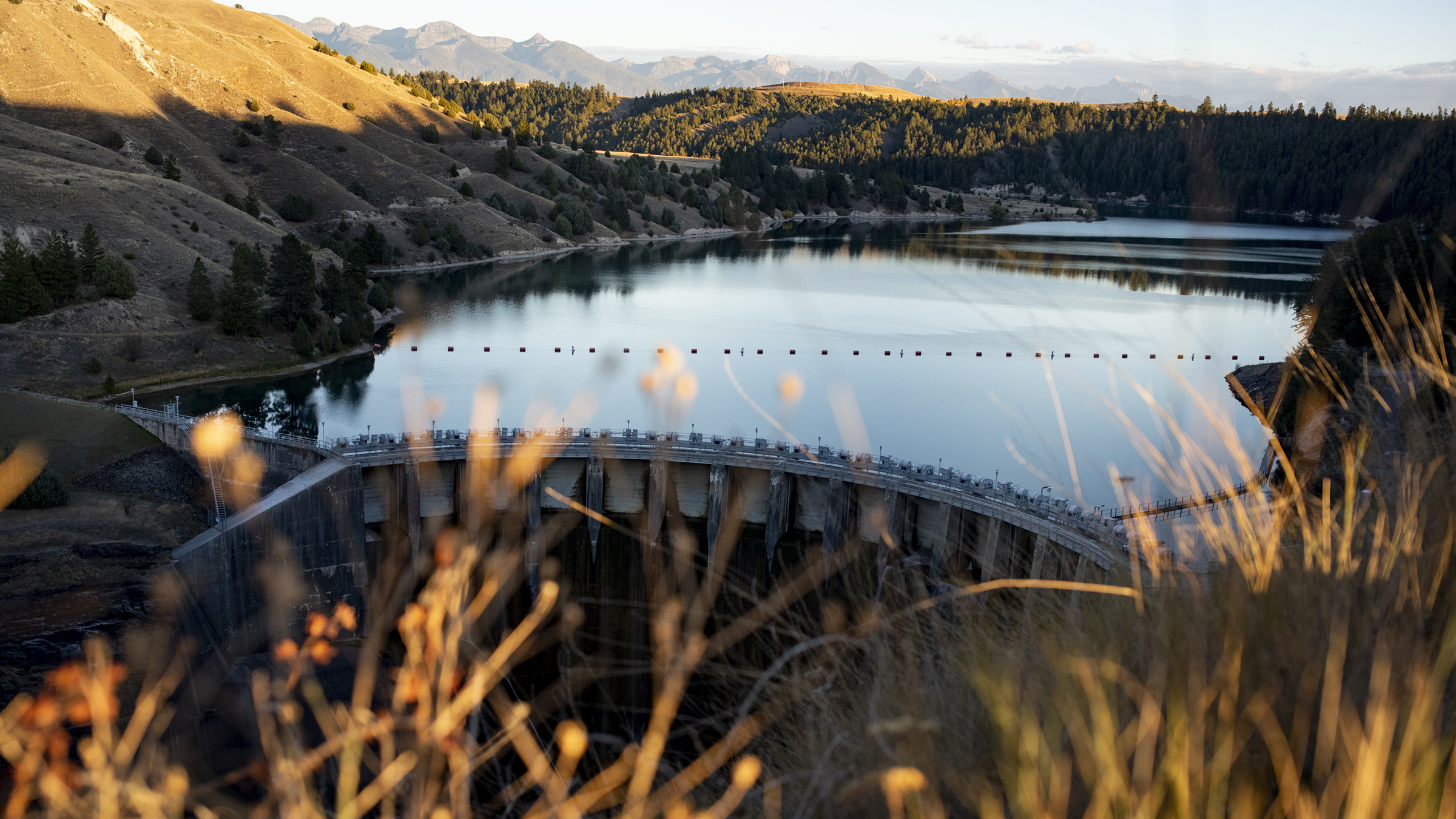The Bakken oil boom has been a big economic story over the past few years, not just in the region but nationally. As documented on the Minneapolis Fed website devoted to the subject, the combination of market conditions and new technology has led to an explosion in drilling activity and production in the oil-producing areas of North Dakota and Montana, and a surge in demand for related jobs.
But it hasn’t been all economic good news. Booming oil extraction has led to a big increase in spills of oil, chemicals and other drilling byproducts, according to an analysis of state records by EnergyWire. From 2009 to 2013, the number of spills tripled, roughly in line with the increase in oil production (see Chart 1). Most of the spills (and oil production) occurred in North Dakota.
The volume of fluid spilled has grown even faster, in part because of a dramatic spike in 2013 (see Chart 2). One of the biggest incidents was a wastewater spill of 17,000 barrels last November in Bowman County, N.D.
As that incident attests, not all of these occurrences are oil spills. The fracking process used to extract shale oil from formations like the Bakken requires pumping large volumes of water mixed with other chemicals at high pressure. Some of the spills in the database are of seawater and other fracking fluids. And a few of the records cover spills of diesel fuel and assorted other fluids used by drilling machinery. Over the past several years, the proportion of spills involving oil appears to have remained fairly stable, at around two-thirds.

Joe Mahon is a Minneapolis Fed regional outreach director. Joe’s primary responsibilities involve tracking several sectors of the Ninth District economy, including agriculture, manufacturing, energy, and mining.





